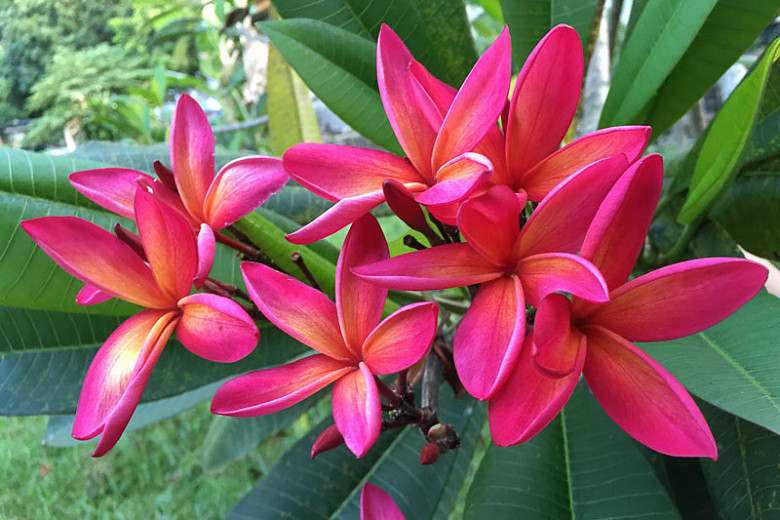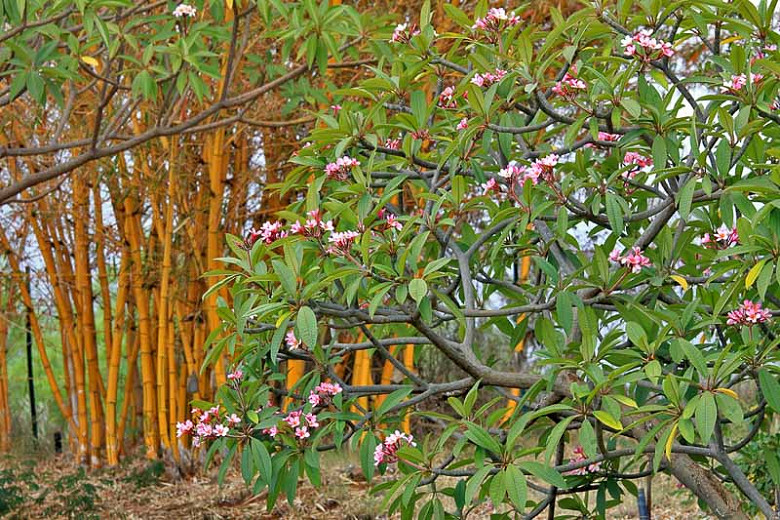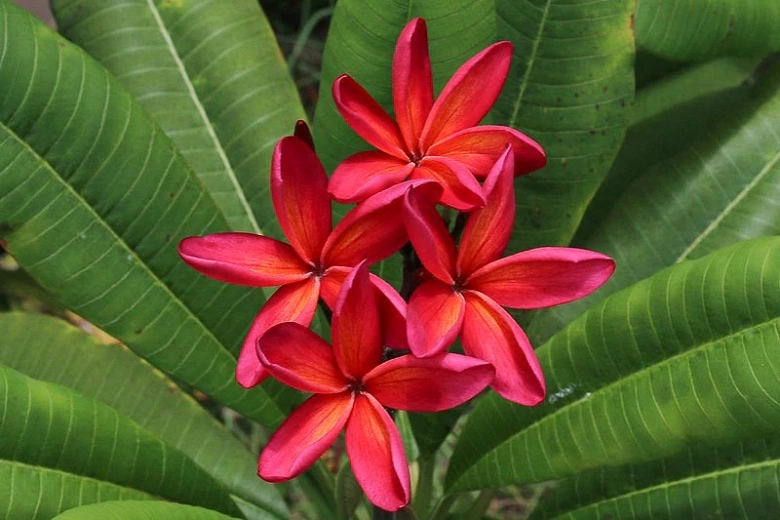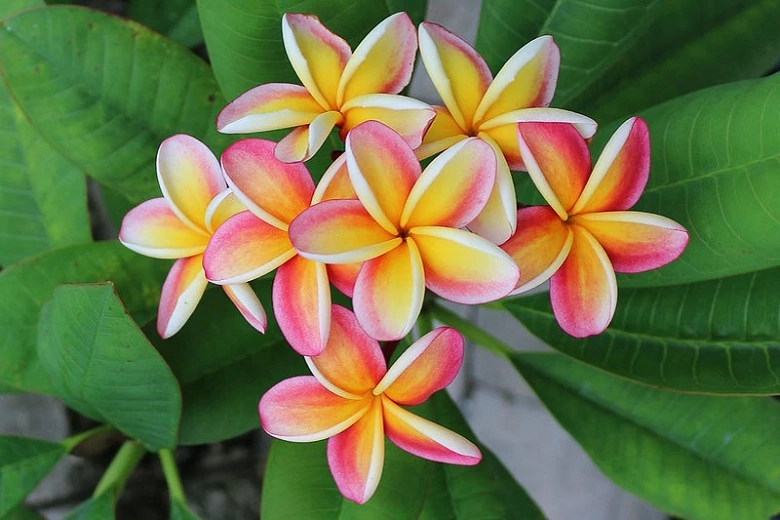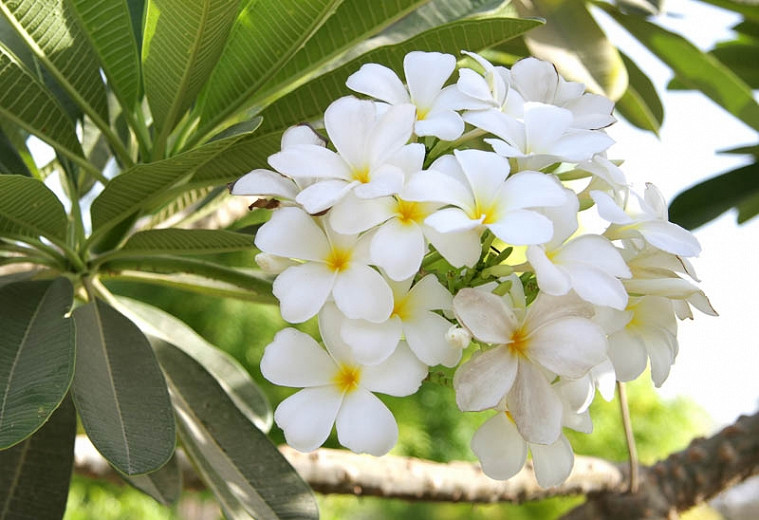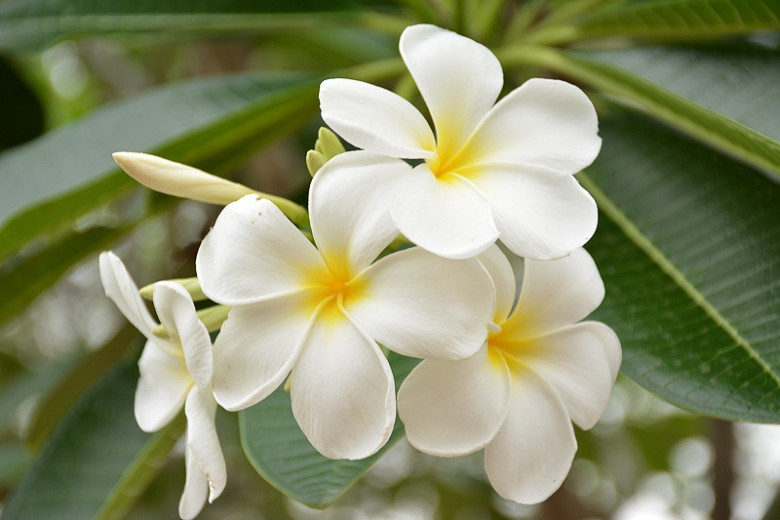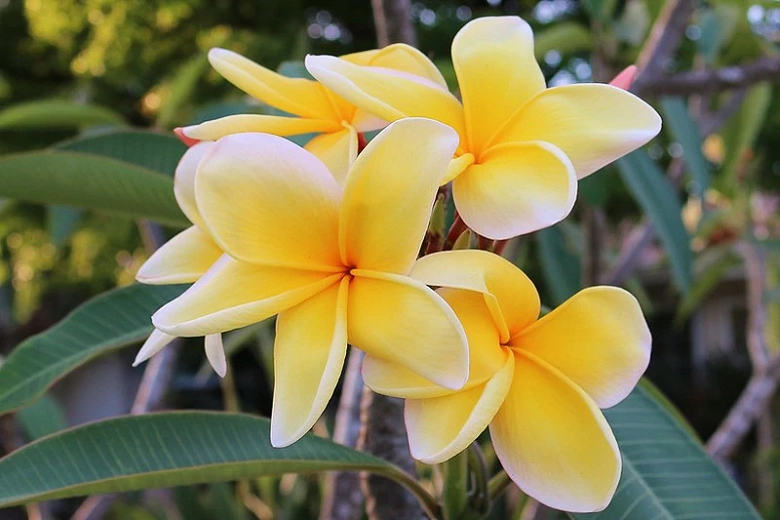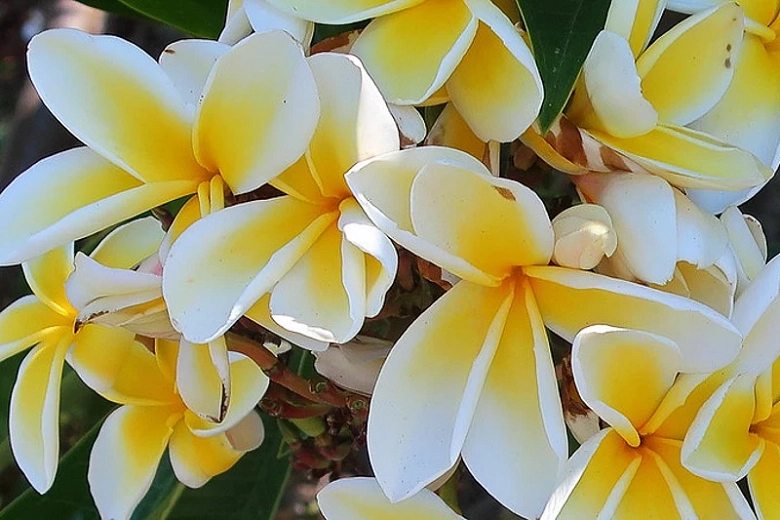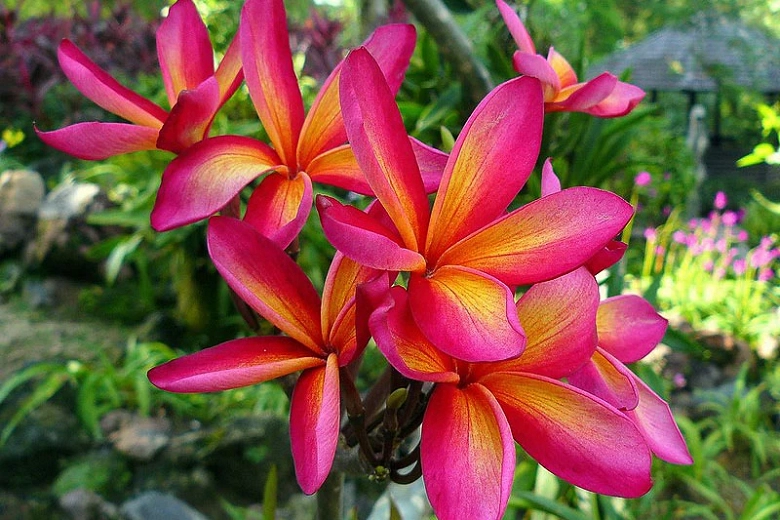Plumeria rubra (Frangipani)
Beloved by so many, Plumeria rubra (Frangipani) is a deciduous shrub or small tree of vase or umbrella shape with fleshy, succulent branches boasting highly fragrant, spiral-shaped, yellow-centered pink to red flowers, 4 in. across (10 cm). Blooming throughout most of the year in tropical areas, the blossoms are borne in terminal clusters at the branch tips. The flowers are sometimes followed by dry, brown, cylindrical, 5 in. long (12 cm) seed follicles containing winged seeds. Leathery, narrowly elliptic, dark green leaves, 8-16 in. (20-40 cm), are spirally arranged and clustered at the stem ends. In areas where temperatures drop below 50ºF (10ºC) during winter, the crown will lose its leaves for a short time displaying the coarse-textured, stubby branches. Frangipani works well as a freestanding specimen, a patio tree, or as part of a mixed shrub border. The wonderfully scented flowers are often made into leis or worn in the hair.
- Recipient of the prestigious Award of Garden Merit of the Royal Horticultural Society for its outstanding qualities
- Typically grows up to 15-25 ft. tall and wide (450-750 cm)
- Performs best in full sun in rich, dry to medium moisture, well-drained soils. Water moderately when in growth, but keep almost dry during the winter months. Salt and drought tolerant.
- Hardy to Zones 10-12, Frangipani is very susceptible to freezing temperatures and may be grown in containers in cooler areas to be brought indoors.
- Perfect addition to beds and borders, coastal gardens, and Mediterranean gardens. Great in decorative containers.
- No serious pest or disease issues. Keep an eye out for rot in soils with poor drainage and glasshouse red spider mite.
- Propagate by seed sown in containers at 18°C (64F) in spring. Take ripe cuttings of leafless stem tips in early spring. Allow these to dry thoroughly at the base before inserting them into the rooting medium.
- Native from Mexico to Panama.
- Plumeria branches exude a milky sap when injured, which can irritate the eyes and cause dermatitis in susceptible individuals. Mildly poisonous, ingesting leaves or flowers can irritate the digestive tract. If your dog eats Plumeria, he may show mild to severe signs of poisoning.
Requirements
| Hardiness | 10 – 12 |
|---|---|
| Heat Zones | 10 – 11 |
| Climate Zones | 12, 13, 19, 21, 22, 23, 24, H1, H2 |
| Plant Type | Shrubs, Trees |
| Plant Family | Plumeria – Frangipani |
| Exposure | Full Sun |
| Season of Interest | Spring (Early,Mid,Late)Summer (Early,Mid,Late)Fall |
| Height | 15' – 25' (4.5m – 7.5m) |
| Spread | 15' – 25' (4.5m – 7.5m) |
| Water Needs | Low, Average |
| Maintenance | Low |
| Soil Type | Loam, Sand |
| Soil pH | Acid, Alkaline, Neutral |
| Soil Drainage | Well-Drained |
| Characteristics | Fragrant, Plant of Merit, Showy |
| Tolerance | Drought, Salt |
| Garden Uses | Beds and Borders, Patio and Containers |
| Garden Styles | Coastal Garden, Mediterranean Garden |
